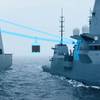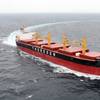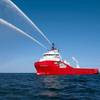Transocean On Post-Explosion Treatment of Crew
On May 11, Transocean Ltd issued a statement in response to several reports that detail Transocean's (NYSE: RIG) (SIX: RIGN) treatment of crew members immediately following the April 20, 2010 explosion aboard the Deepwater Horizon, including erroneous allegations that crew members were asked to sign waivers. The company would like to clarify the series of events that transpired that evening and the days after the incident.
-- U.S. Coast Guard, as on-scene incident command, not Transocean, in control of rescue vessel: All decisions aboard the rescue boat, the Damon Bankston, were made solely by the Coast Guard and all efforts to transport crew members from the rig to shore were coordinated by the Coast Guard according to standard maritime procedures. The company's immediate concern was to account for all those aboard the rig and to search for those 11 men who were ultimately determined lost. All decisions aboard the rescue boat were made solely by the Coast Guard, including the length of time crew members were kept at sea, the final destination port and the decision not to allow them use of the satellite phones aboard the boat. Those crew members who were critically injured were immediately transported by Medevac to the appropriate medical facilities. All actions taken by the Coast Guard were consistent with those taken during other emergency actions at sea.
-- Transocean did not present incident response forms when crew members arrived at shore: The rescue ship arrived at Port Fourchon approximately 27 hours after the incident. Contrary to several erroneous reports, there was no distribution of any incident response forms on behalf of Transocean to the crew members at that time. Upon arrival at Port Fourchon, crew members were given an opportunity to leave, however, were encouraged to accept transportation to the Crowne Plaza Hotel in Kenner, La.
-- Crew members were offered medical care, rooms and opportunity to go home upon arrival at hotel: The Crowne Plaza Hotel was used as a central location for the crew members and their families with the goal of meeting all of their personal and medical needs and of obtaining as much information about the incident as possible. Upon arriving at the hotel, crew members were offered the opportunity to meet with qualified medical professionals, to retire to private rooms where they could eat, shower and sleep, or go home. Only then did Transocean and its representatives present crew members with a standard one-page document that asked them to describe where they were at the time of the incident, what they were doing, and to affirm, if true, that they were not a witness and/or that they were not injured. They were free to complete the form at their leisure, or not at all. Some crew members even took the forms home and returned them more than seven days after the incident.
"Transocean's first commitment has always been and will continue to be to the safety and well-being of our people," said Steven L. Newman, President and Chief Executive Officer of Transocean. "All actions and decisions taken by our company representatives, as well as those by the U.S. Coast Guard, on the evening of the incident and throughout the days following, were made with a focus on meeting the personal and medical needs of all those aboard the Deepwater Horizon."











